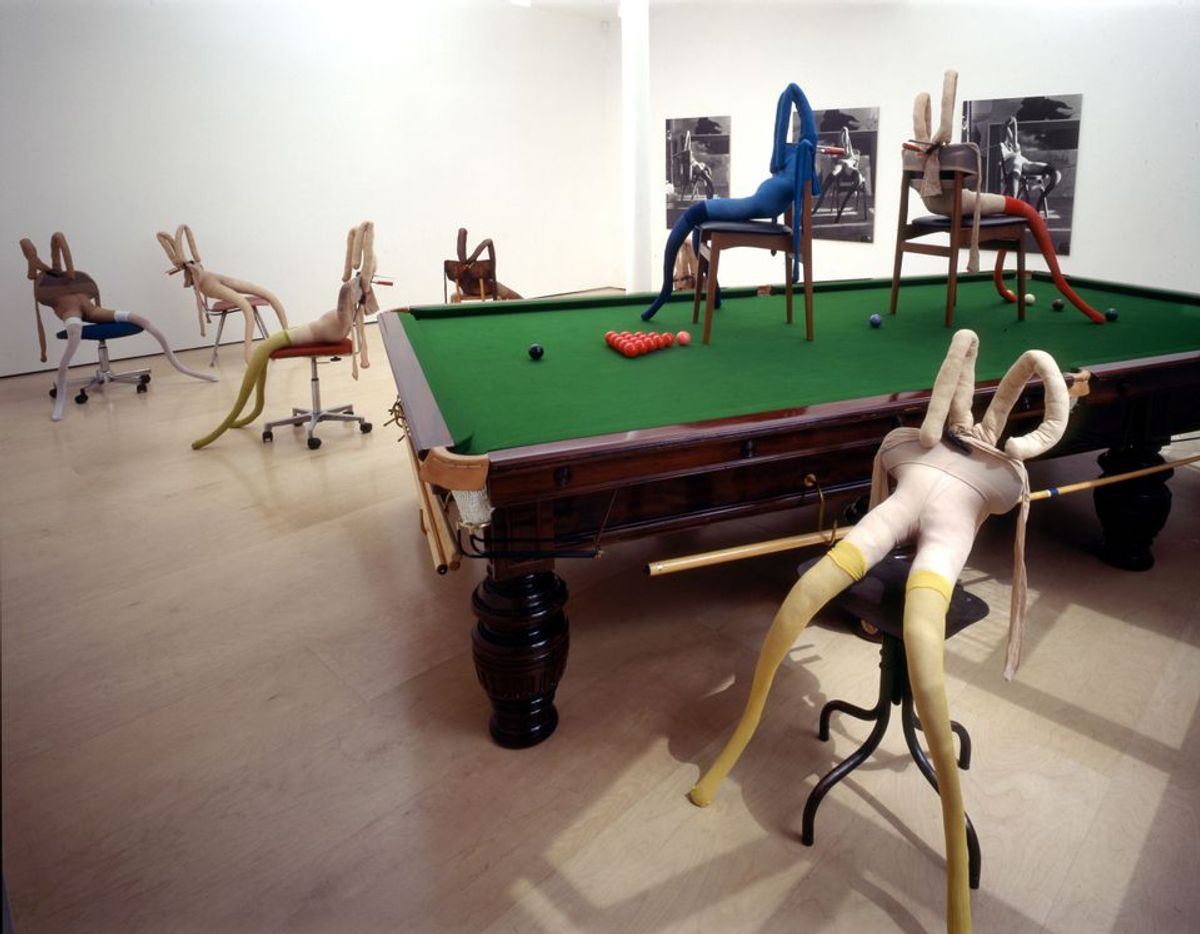Sarah Lucas: Au Naturel at the New Museum (until 20 January 2019), the UK artist’s first show at a US institution, is satisfying at every turn: tough, hilarious and beautifully done. From the start of her career in the early 1990s, Lucas has made art that playfully, and deliberately, countered male depictions of the female body, then went on to pierce the priapic consciousness of so much that came before her. The show, which unfolds across three floors in displays of sculpture, photography, photographic wallpaper and video, is replete with references to Dada, Surrealism and Minimalism. For all her scrappy, found-in-the-street materials—battered toilet bowls and furniture, old mattresses, rubber chickens, stuffed pantyhose, evocative foodstuffs, crushed cars—the show conveys an unmistakable sense of majesty. On the top floor a giant self-portrait of a spread-legged Lucas oversees looming plaster phalluses and crushed, burned or sliced Jaguars and a crucifixion completely covered with hundreds of unsmoked cigarettes. “We hope jaws will drop,” says the museum’s director, Lisa Phillips.
As digital storefronts multiply, visiting galleries in the flesh “can give a unique impression of an artist’s work”, says Bart Keijsers Koning of LMAKgallery, one of 17 Lower East Side galleries who have launched LES Art Week (until 21 October). The new event has solo and group exhibitions by emerging and established female artists, as well as a series of gallery walk-throughs and talks with directors and artists. LMAK’s Still They Persist (until 3 November) shows protest art from the January 2017 Women’s Marches, collected by the Ohio-based group FemFour. Perrotin is showing of works by artists in their programme including Sophie Calle, Bharti Kher and Paola Pivi. Don’t miss Joyce J. Scott: What Next and Why Not (until 10 November) at Peter Blum, mixed-media sculptures in beadwork, blown glass and found objects by the US artist—gorgeous and beautifully-crafted, with myriad culture and spiritual influences, from Buddhism to vernacular art of the US south to West African Yorubu weaving, looking at race, gender, class and violence.
In For Opacity: Elijah Burgher, Toyin Ojih Odutola and Nathaniel Mary Quinn (until 3 February 2019), the Drawing Center unites these artists in their shared use of drawing to deal with “subjecthood”, “opacity” referring to how subjects can resist depiction—and their right to do so. But take away this intellectual framework, and the show still stands: an enjoyable opportunity to see the work—some made for the show—of three radically different young artists. Elijah Burgher’s works in extremely fine lines of coloured pencil on paper, include almost surrealist portraits in soft colours with abstract, Sonia Delaunay-like pieces in bold hues. Quinn’s pieces, mixing drawing and collage, creates distorted faces from found images that can be grotesque or beautiful, often with pleading eyes. Ojih Odutola’s beguiling portraits include subjects from her ongoing fictional narrative of two aristocratic Nigerian families joined by marriage. The expressions, poses and detailed backgrounds give you just enough information about the characters—the strongest, most compelling subjects in the show—to make you feel like there’s so much more you want to know.


